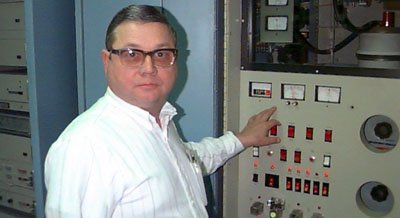
The Klystron & Cactus
[Editor's note: This is a great story of one of the ways Cactus saved Channel 31 hundreds of thousands of dollars over the years, by repairing things others would have replaced. In the early days, a Klystron costs $12,000.00 and later the Eimac cost $25,000.00 and finally they have reached the $70,000.00 range. You can see why keeping one running a LONG time is very important. Some stations have to change them every year or two.]
MD, while we were having the fun of a lifetime at Channel 31 there were many uncommon accomplishments. Looking back, as I do often, I recall the first day I met your dad, Mr. Smith lll.. He was talking to some bankers up at the station and I later found out that he had borrowed $380,000.00 from a Birmingham bank, I think Birmingham Trust was the bank.. At the time I thought, "man !!! that's a lot of money for this ol' bucket-of-bolts".. [ ed note: selling price was $500k, but $380k was borrowed] All the equipment was over the hill, nobody really recognized UHF TV as a viable TV medium back in 1963 , we did not have enough commercials on the log to even make the payroll much less make a bank payment.. But anyway the rest is history.. Channel 31 not only made the payroll under your family control, it paid thousands of hard working broadcasters salaries along with making a lot of money for the family.. And to top it off, if you do a little math, the station grew at an average rate of 13.5% over the 37 years of operation.. That ain't bad for a lifetime business... Most of us made a significant contribution.. Here is one of mine..
I guess one of my main contributions to the cause was in the "boiler room", that being the transmitter area.. When I first walked in Channel 31 back in 1961 at the young age of 21 , Tom Barr and Vic Bankowski were installing an old GE internal cavity klystron 12.5 KW output transmitter that came out of a bankrupted station in North Carolina.. They paid $37,000.00 for it and one GE 3 inch image orthicon camera... It all was a mess to say the least.. Back in those days due to the failure rate, GE rented the tubes ( klystrons ) based on filament time for $1.25 per hour. That meant that you would turn them off when not in use to save rental.. Well after about a year of many failures from cold starts I convinced Tom and Vic to make a deal with GE to only charge for the time when the tubes were on the air with full power and of course we would be willing to pay a somewhat higher rental rate.. Well that was my first start in giving UHF klystrons longevity.. I learned to work around the engineering flaws of these ol' tubes (ed note: Cactus even used a 2x4 to hit a klystron to make a shorted filament work and kept that tube going a long time) and later broke many records in hours of operation between failures..
When I sold the old GE transmitter in 1981 to a God sent entrepreneur from Mexico, it still had one of those old original 1962 tubes in the aural side... ( on a side note; the Federal Government was requiring all users of equipment that had PCBs for insulating oil in their transformers and capacitors to be disposed of under strict government control.. I looked into the matter and asked South East Disposal out of Birmingham about how much would they charge to get rid of the stuff.. I almost fell out when the fellow told me about $30,000.00.. That is when I decided to find a buyer for the old transmitter outside of the country.. Well, with the help of my ol' friend George Townsend, I sold the GE for $50,000.00 to a well-greased Mexican by the name of Jim Garcia who wanted to build a UHF channel 32 in Monterrey.. He even sent an 18 wheeler up here and Don Roden and I loaded it up and off it went to Mexico )
Now; back to the subject at hand... By now, we were using 50,000 watt Eimac external cavity klystrons and we had managed since 1967 to learn much and were already breaking life-records-of-service with these high power tubes.. One of the main enemies over a period of time to these large tubes was PURE distilled water ( water was used for cooling ) which was thought ( distilled water ) to be necessary at the time because distilled water was a perfect electrical insulator ... For several years I managed to maintain the system using distilled water ( instead of ionized water ) and putting up with water leaks in many of the metal plumbing pipes that were due to the PURE distilled water leaching electrons out of the copper and stainless steel parts..
One day Don called me on the phone and informed me that we had a real bad leak in the visual klystron... After looking the problem over I called Eimac out in California and talked to one of their engineers, Jason Pierce, as to what I could do to fix the leak, which was in one of the drift cooling pipes.. He said , "Cactus" you can't.. there is no safe way to fix that problem due to the make-up of the stainless to copper bonding in an environment of an extremely toxic ceramic seal which has a very poisonous gas inside of the envelope" .. WELL !!!! Ol' Don looked at me and I looked at him and we both said at the same time, "hell we can fix this damn thing and save ol' MD about $25,000.00"........ Jason was wrong.. Don and I went to work on the impossible........
Here is a picture of the name plate on the klystron..
Notice the warranty date of July 1970.. This was in about 1975 or so...
This ol' boy already had about 60,000 hours on it in visual service..
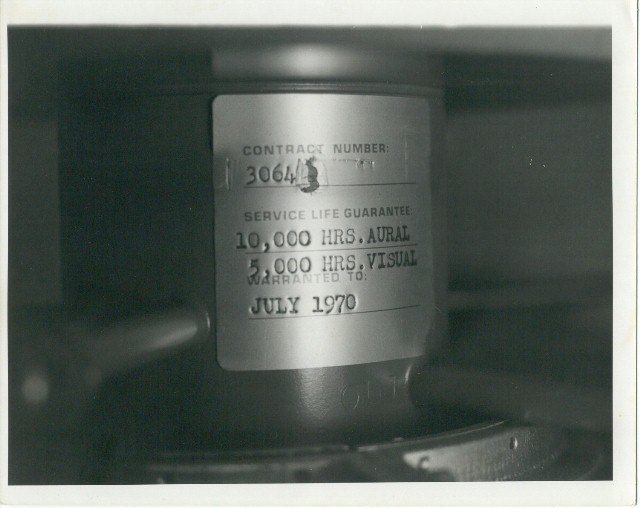
If first you don't succeed, try something else..
Good engineers do not let failure get in the way of success ..
Well .... this ain't gonna work...
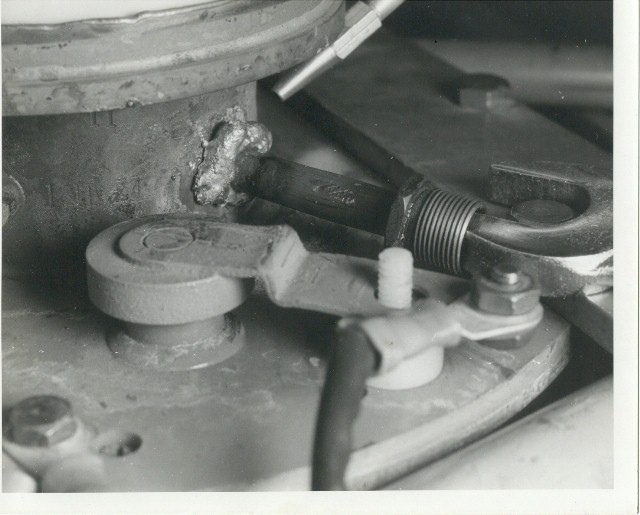
This is a mess..
Not enough heat..
We must remember that poisonous seal....
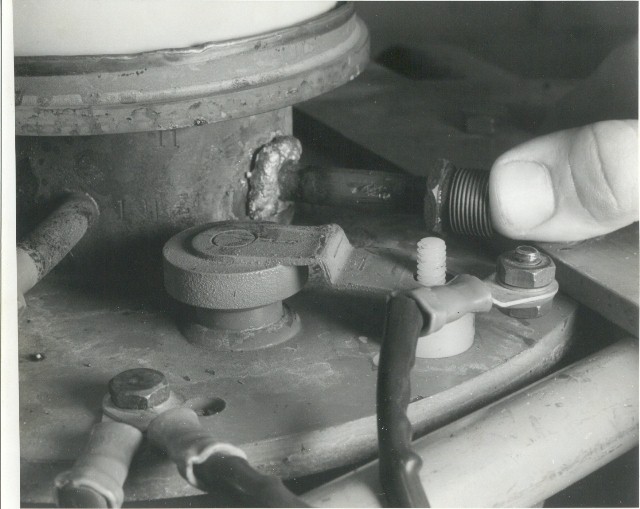
Lets clean it up and start over...
And drill it out ...
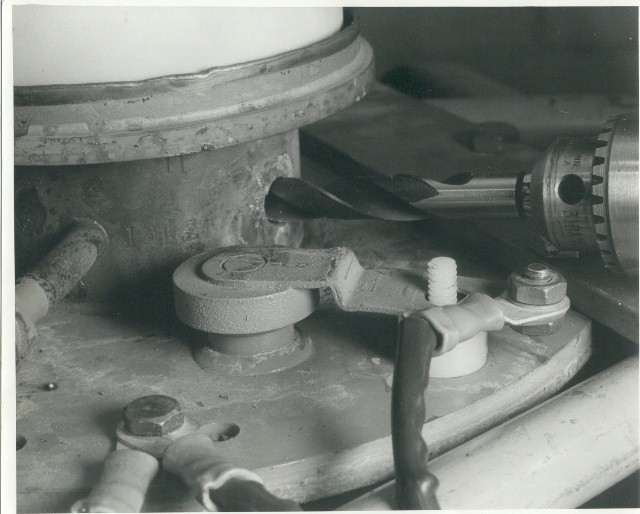
and tap it to a 3/8 inch water pipe thread.
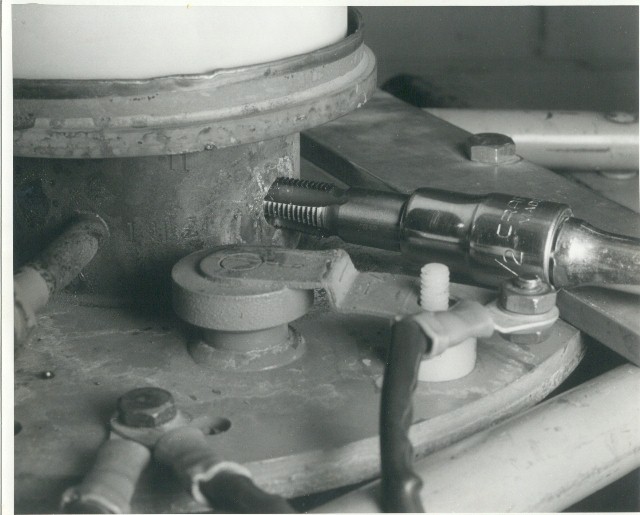
It fits like a glove..
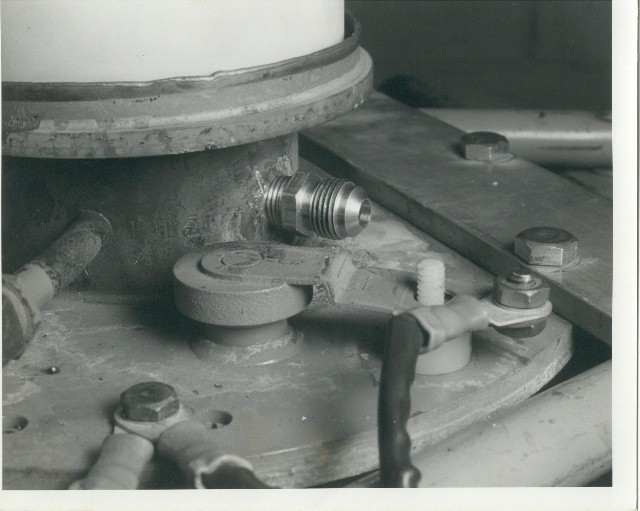
Put a little Permatex around it to make a water tight seal...
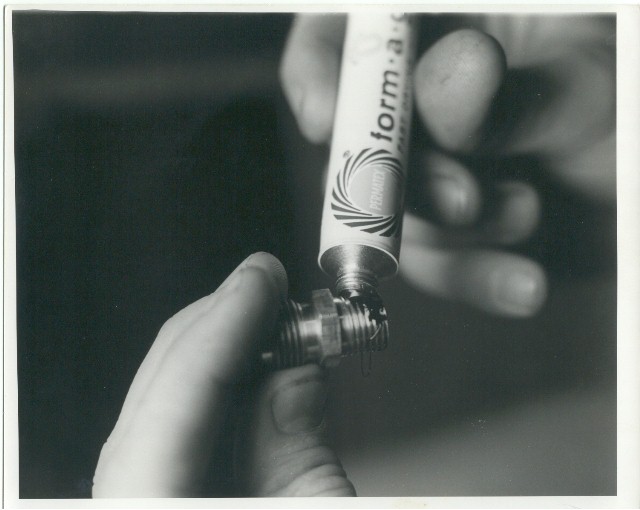
And lookie here... Good as new..
This old warrior was put back in service and ran another 100,000 hours before I retired it to the back room for a spare...
I believe it has over 163,000 hours of service.. It was warranted for 5,000 hours visual service..
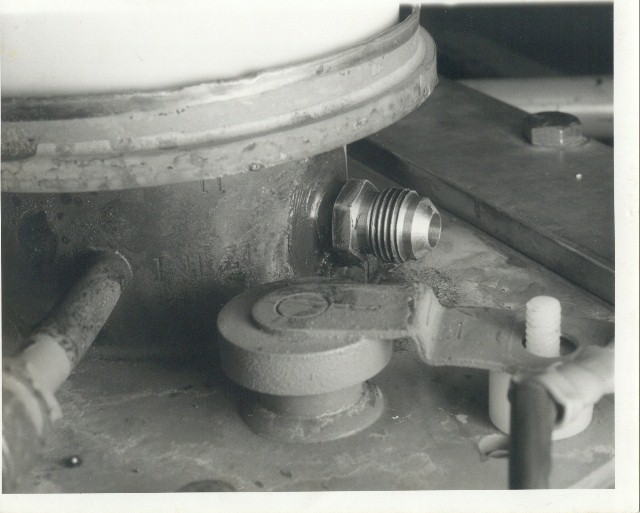
This is just one of the ways we kept these tubes on line.. "Doing the impossible"... I later contaminated the distilled water with a little amount of citric acid ( vinegar ) and most of the leaks subsided... I have a letter from Eimac dated 1996 stating that Channel 31 in Huntsville has gotten more hours of service with less klystrons than any
commercial UHF TV station in the United States....
This is one of my stories of a life time at Channel 31.. I love you all ,"Cactus"
© 2003 Smith Broadcasting, Inc. [update 8-4-2003] |








